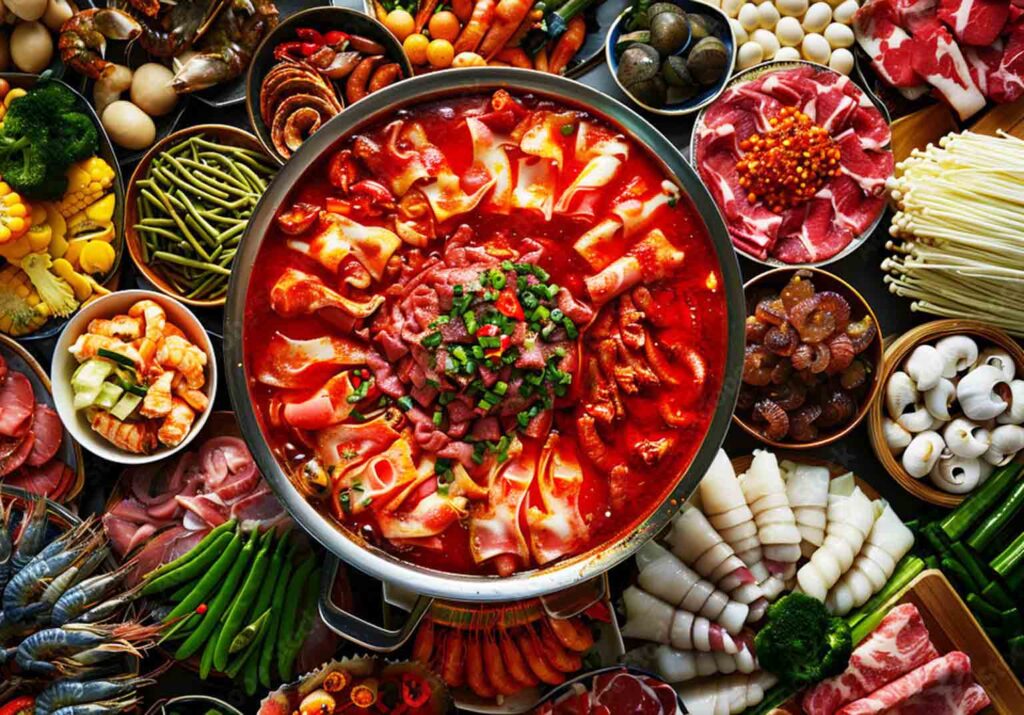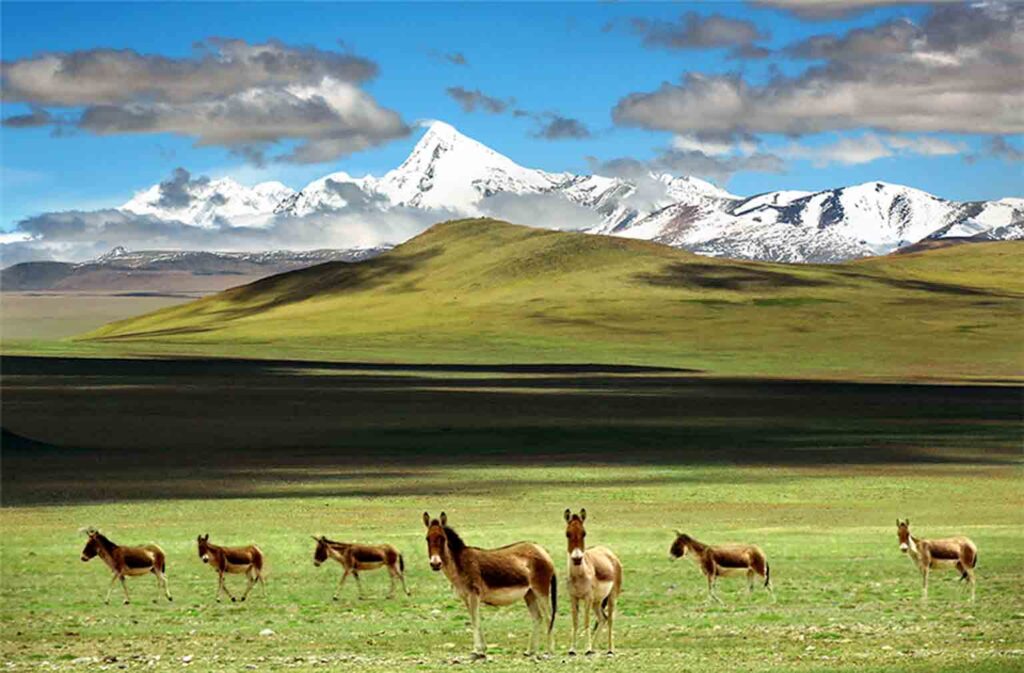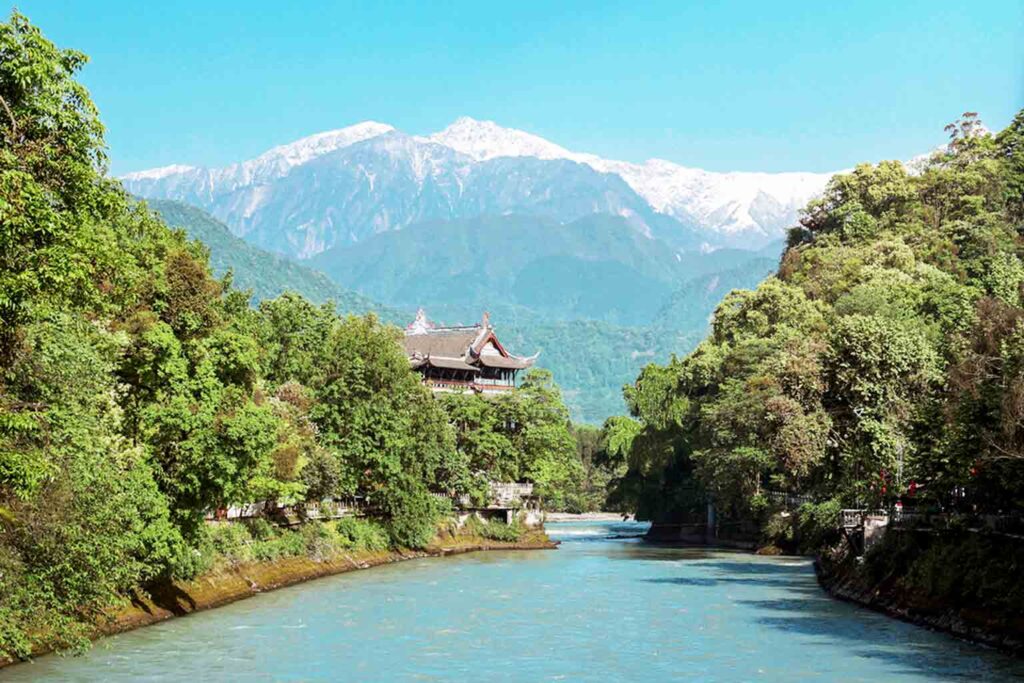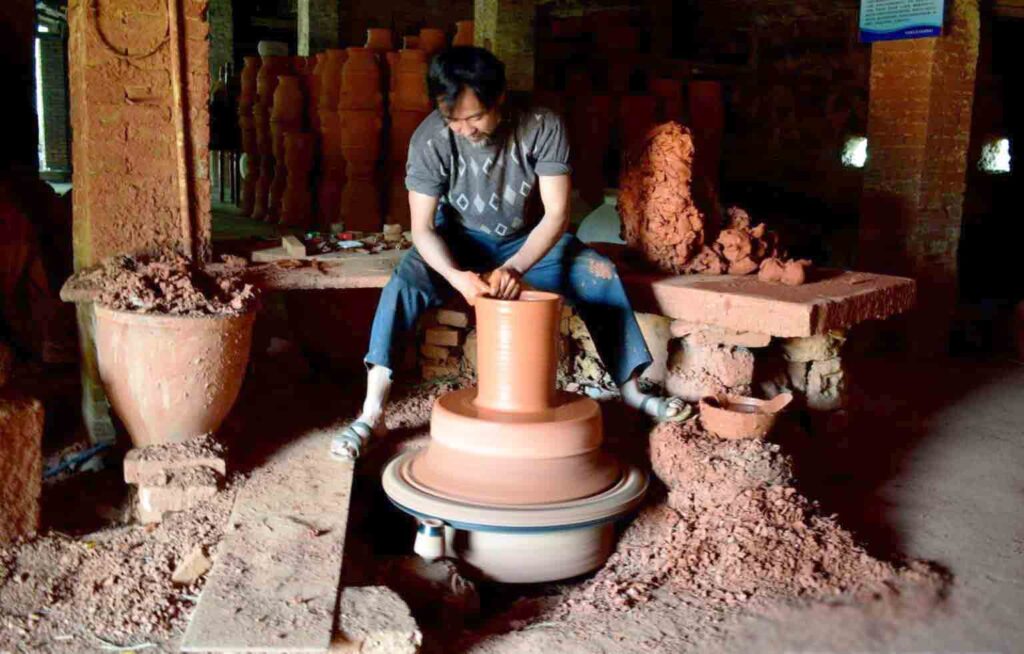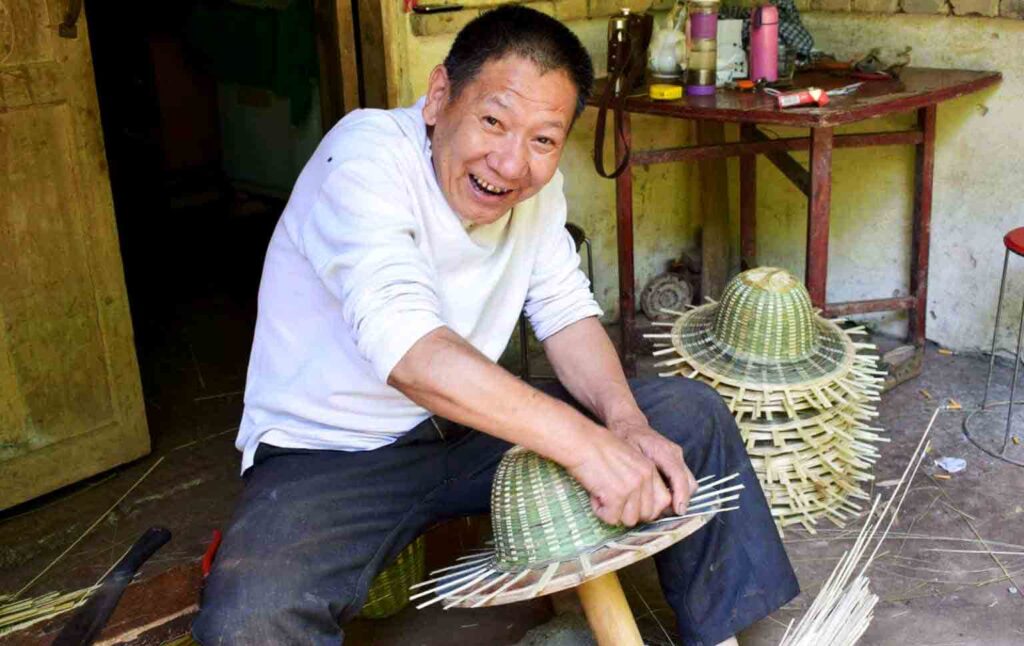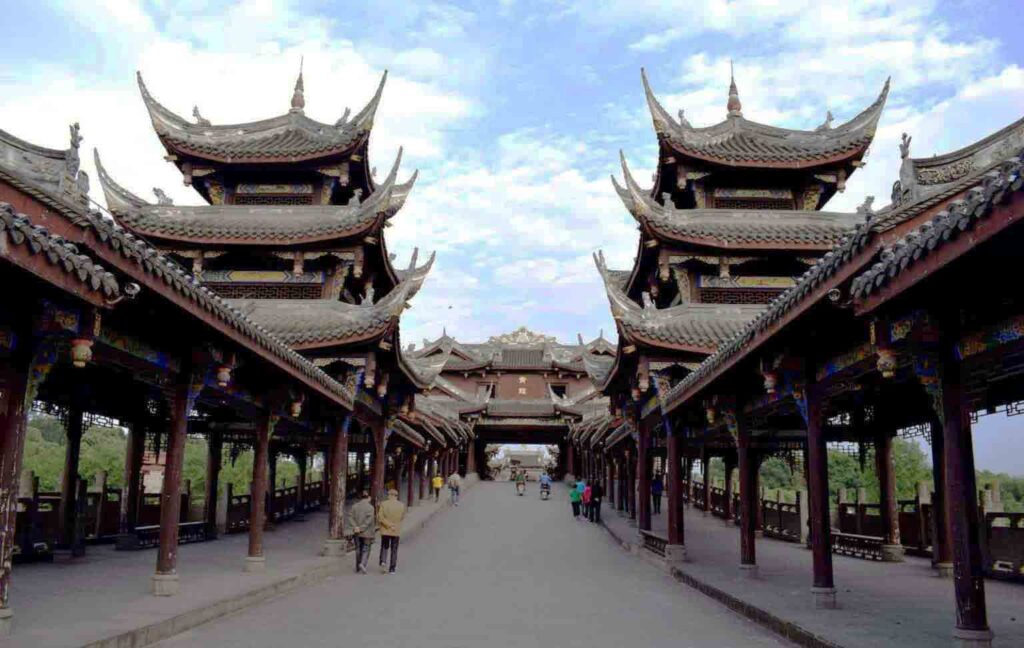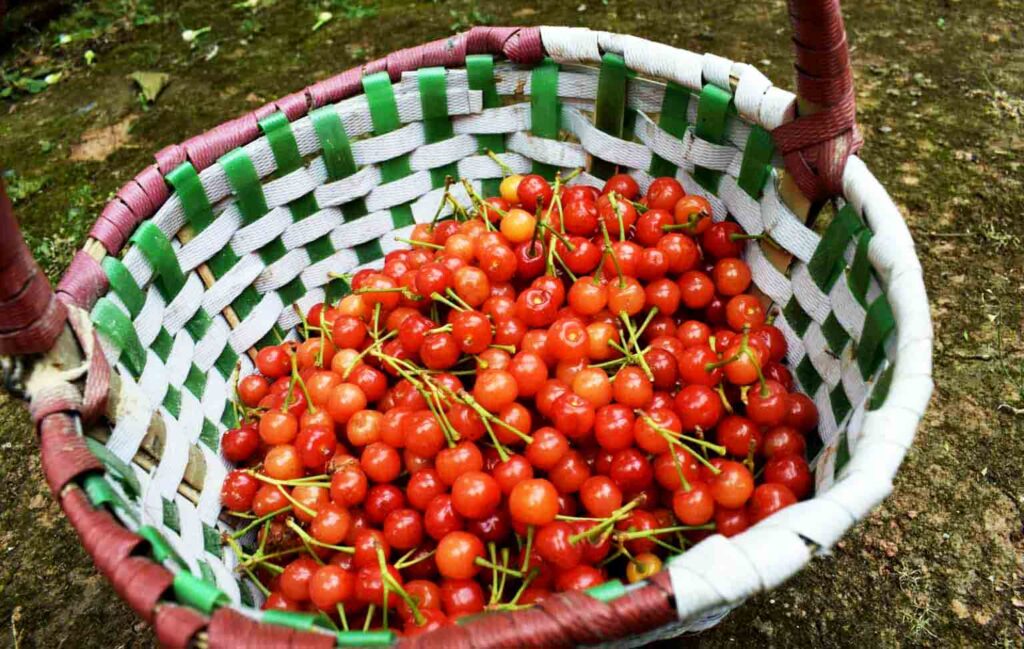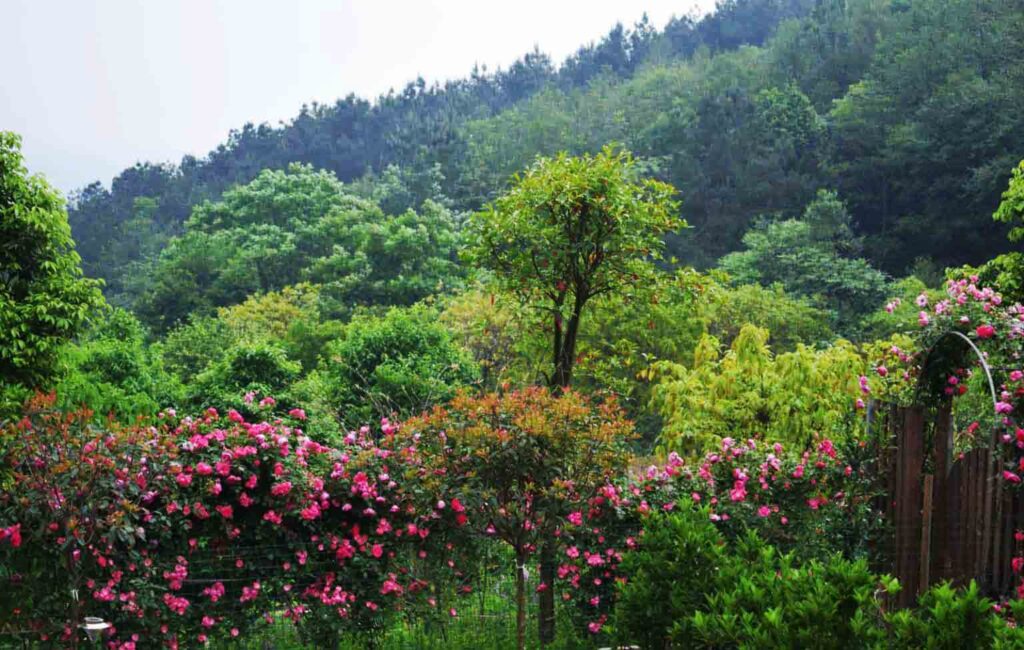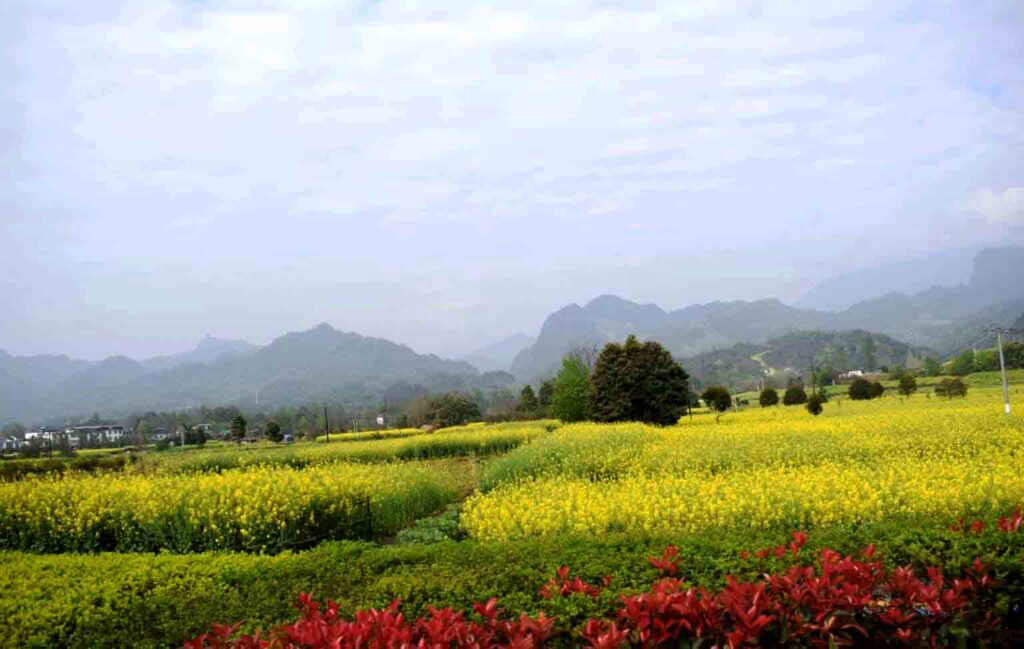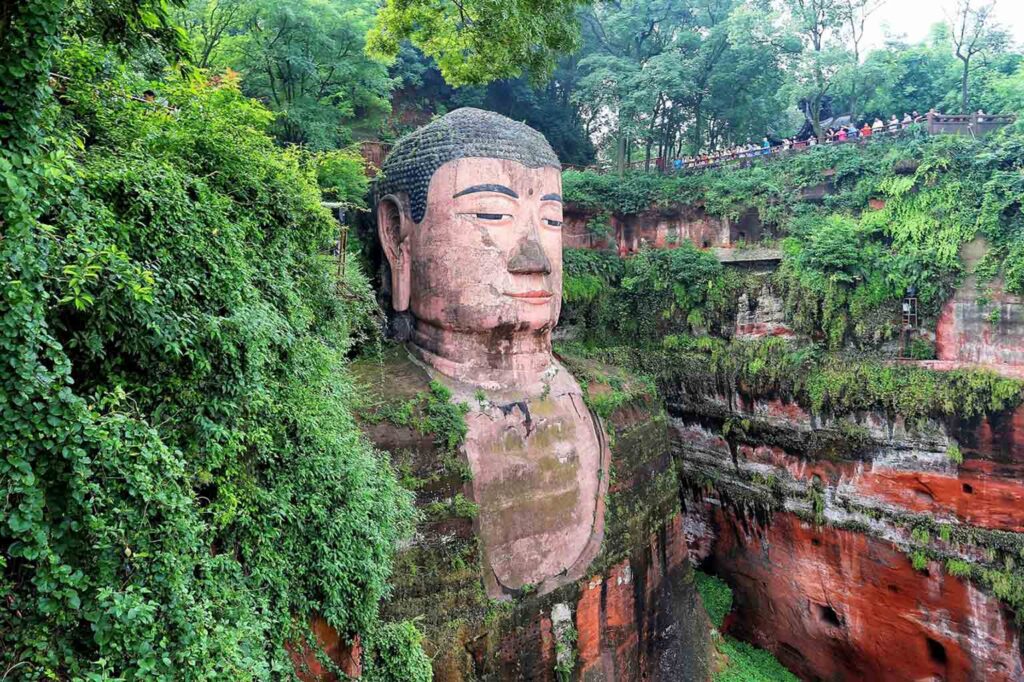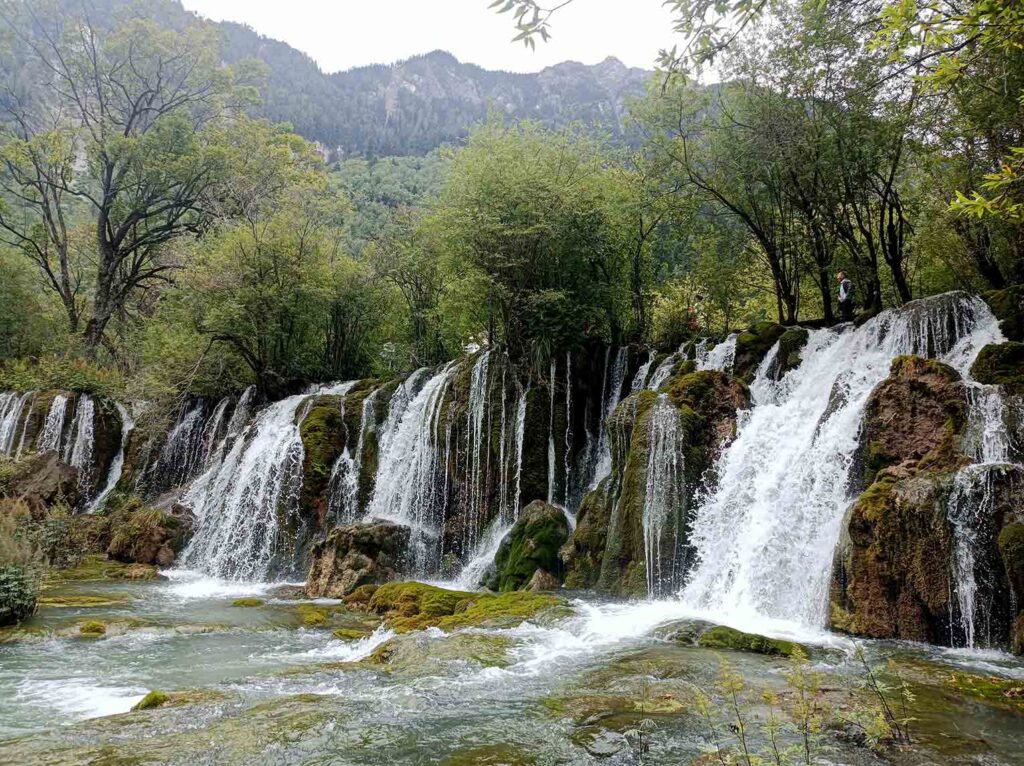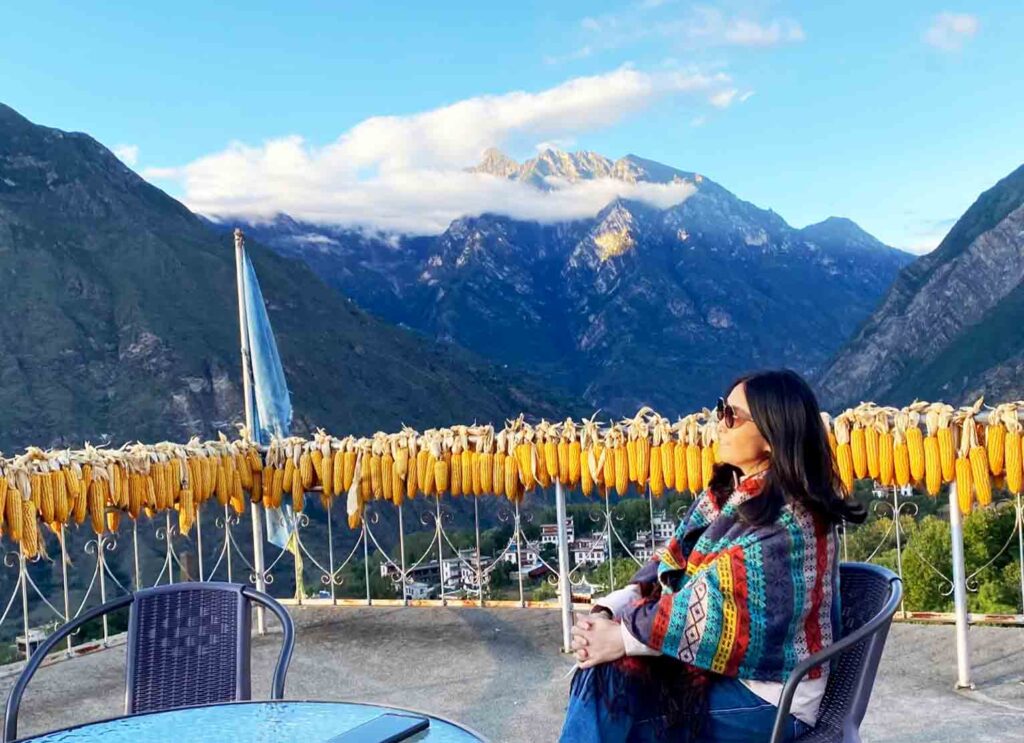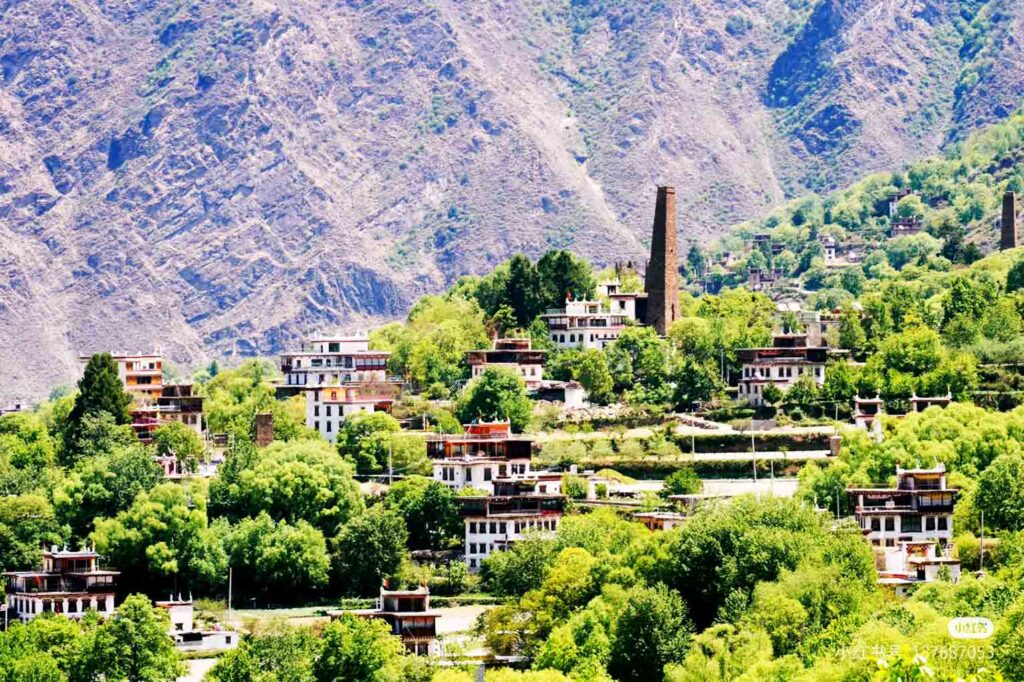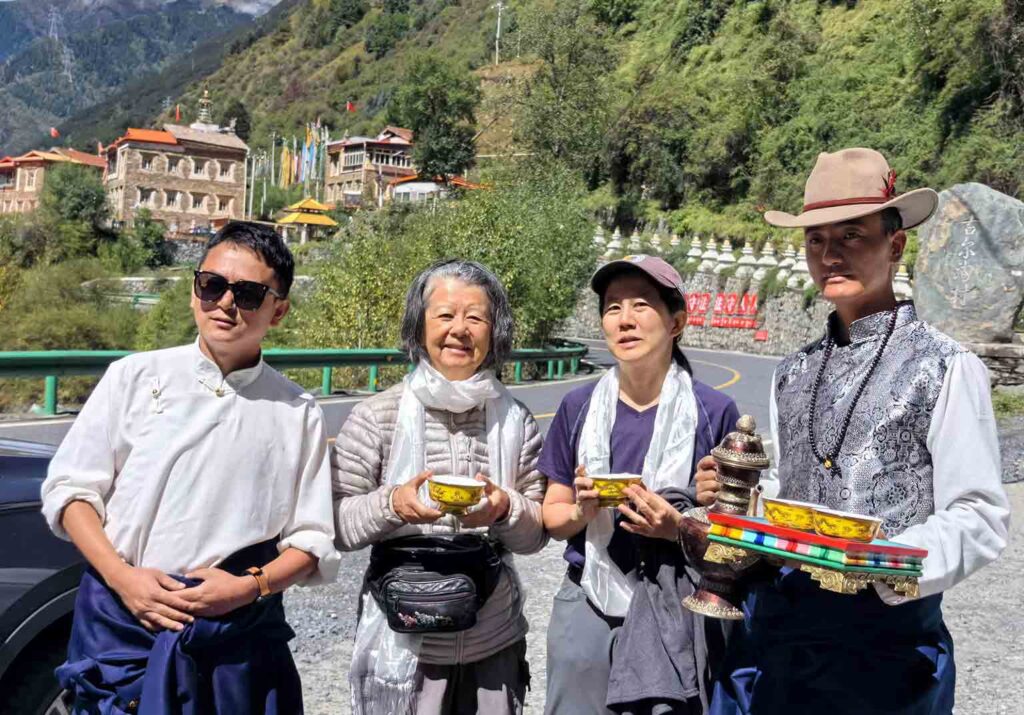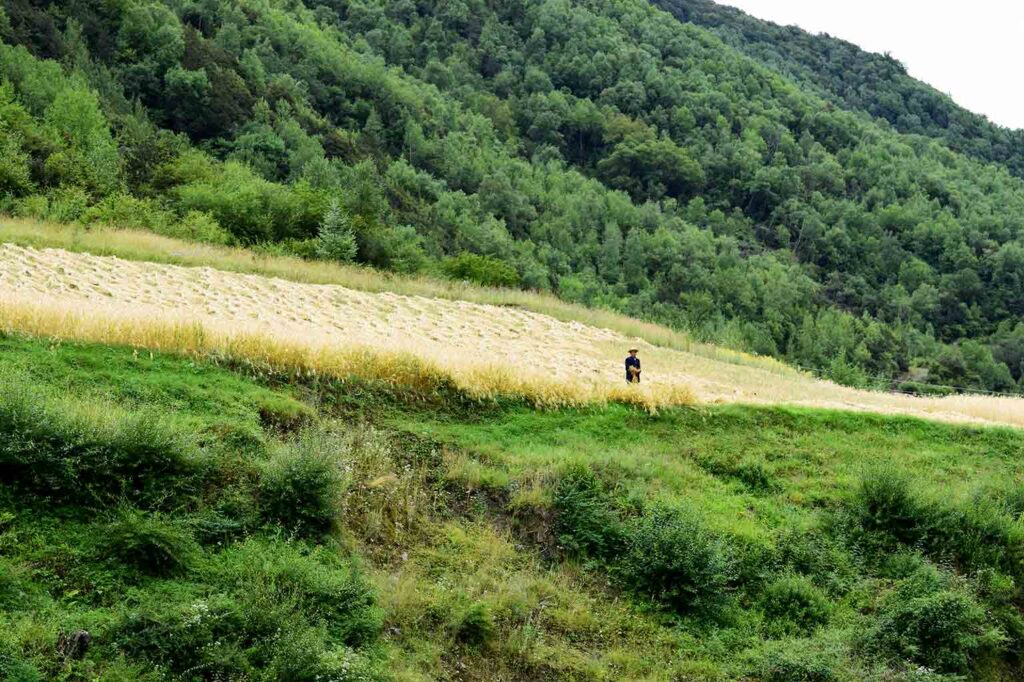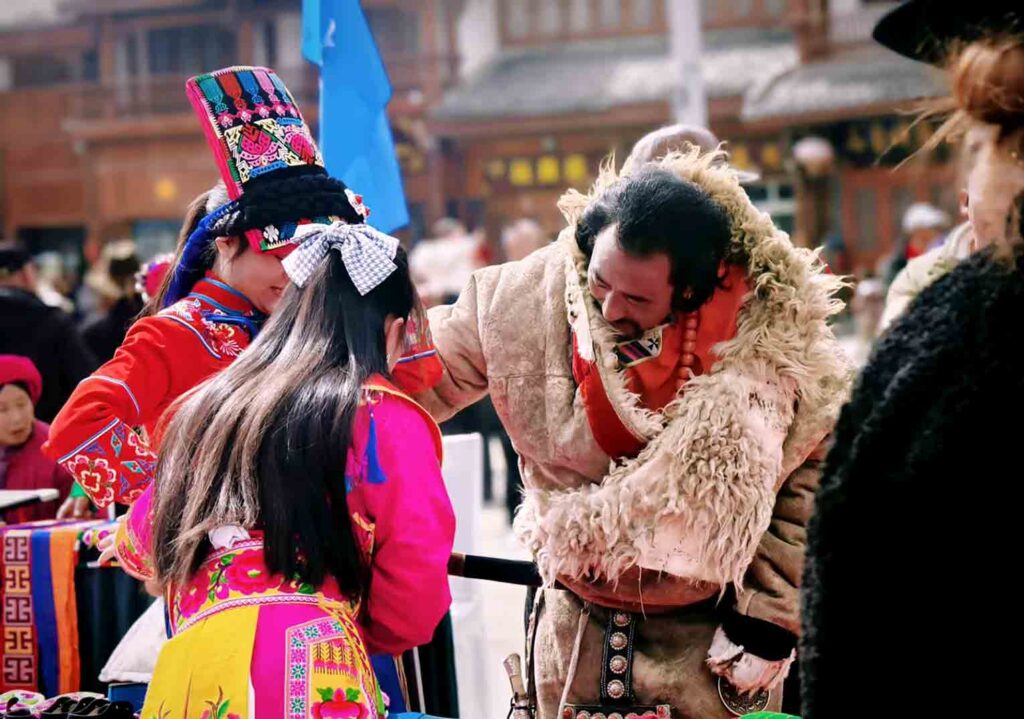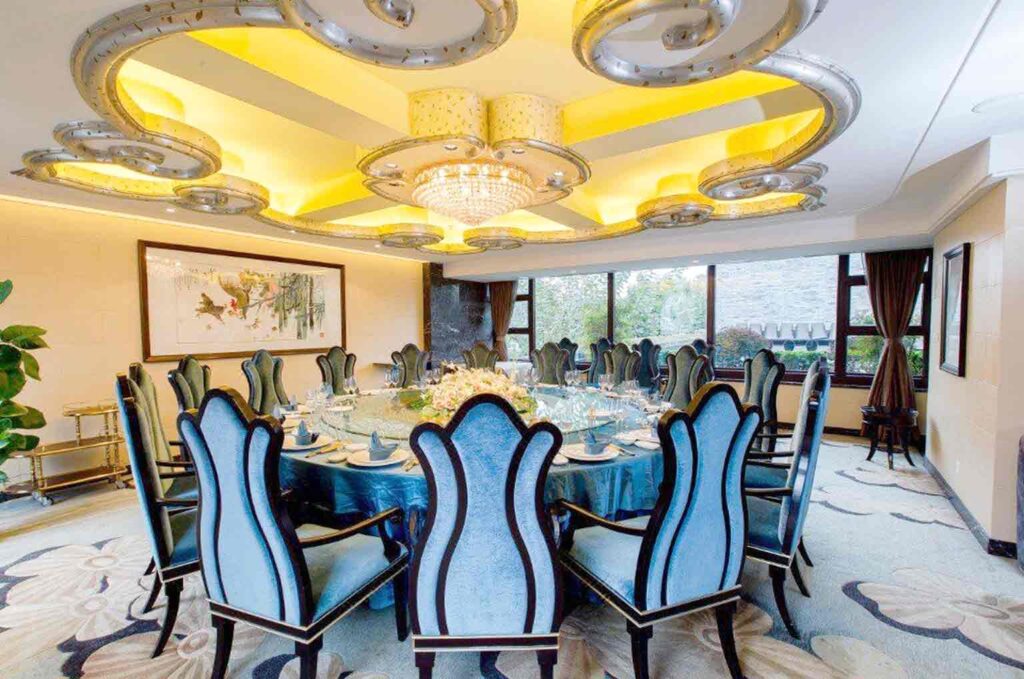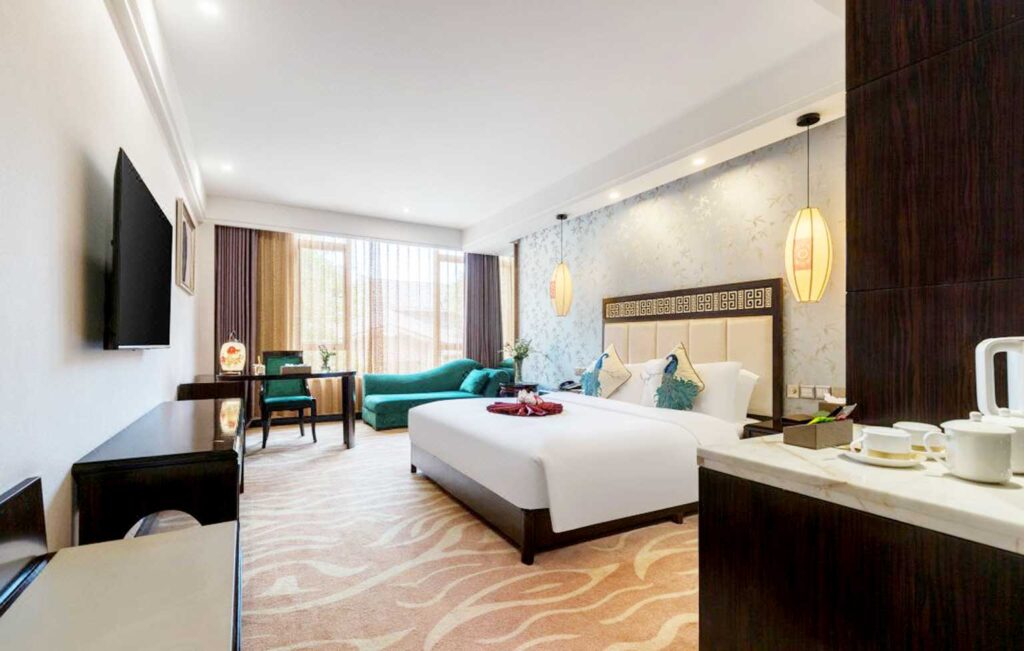NEW TOUR
Join this special tour - Places available now
- Start Date Status
- 10 October 2025Available
- 6 May 2026Available
- 12 October 2026Available
Share this tour:
A 15 day Walking and Cultural Journey in China
Sichuan, China: A Cultural and Culinary Powerhouse
Sichuan, a Southwestern province in China, is a region celebrated for its deep cultural heritage, stunning natural beauty… and, perhaps most famously, its bold and flavourful cuisine.
With a population of over 80 million, Sichuan is one of China’s most populous provinces and plays a vital role in the country’s history, economy, and gastronomy.
Tibet – an Historic Area with Great Cultural and Natural Beauty
This tour covers the lower part of Tibet, where walking is at an easier level. (There is no walking over 3000 metres on this tour) .
Tibet, often called the “Roof of the World,” is a land of breathtaking natural beauty and deep spiritual heritage. Nestled high in the Himalayas, this remote region is home to some of the world’s most awe-inspiring landscapes—snow-capped peaks, vast plateaus, turquoise lakes, and sweeping valleys.
Beyond its physical grandeur, Tibet is also a place of profound cultural richness shaped by centuries of philosophy, art, and tradition.
Wildlife

Enjoy nature and a diversity of wildlife in the Tangjiahe Nature Reserve, including a takin (the largest mammal you’ve never hear of), deer, Tibetan macaques (one of the largest monkeys found in Asia.), blue sheep, golden pheasants, yellow-throated martens (recognisable by its vibrant golden-yellow throat and sleek, elongated body).
There are also giant pandas, golden monkeys, clouded leopards, golden cats, black bears etc., all living in the mountains, but not often seen.
Minority Villages & Culture

You will enjoy walking through traditional Gyalrong Tibetan villages – to explore their unique cultures, visit local families, and stay overnight in a Tibetan village and a Qiang minority village.
There will be three nights of accommodation in local minority villages, including two nights in Tibetan villages and one night in a Qiang minority village.
The Qiang are a long-standing ethnic group in Western China, dating back to 1,600 BC.
Experience the Spectacular Grandeur of the Lower Tibetan Plateau

Walk around stunning alpine lakes and waterfalls, as well as in the primeval forests of beautiful Jiuzhaigou Park and Mounigou Parks, at elevations between 2,000 and 3,000 metres above sea level. We have carefully chosen the parks that are most suitable for easy walking.
Explore Interesting Ancient Towns on Foot

We will visit the Songpan Ancient Town (2,800 metres above sea level – inhabited by Tibetans and Muslims) and the Shangli Ancient Town (a beautiful and tranquil riverside town with traditional houses, snacks, noodle bars and interesting stalls).
Pandas

You will go close to pandas at the Bifengxia Wildlife Park – a large panda and research centre. There are cubs, sub-adult sized pandas and adult pandas.
A number of pandas were born at the Panda Base, and others are out on loan to foreign countries.
Leshan Giant Buddha
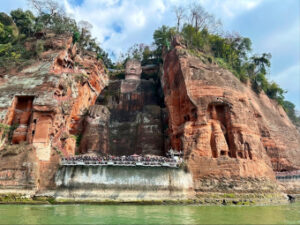
See the 1,200-Year-Old, 71-Metre-High Leshan Giant Buddha. This is the largest Buddha statue in the world and is a UNESCO World Heritage site.
The statue was carved in the 8th century during the Tang Dynasty and is overlooking the confluence of three rivers.
Its construction took 90 years, from 713 to 803 AD, led by the Buddhist monk Hai Tong.
Chengdu

The capital of the Sichuan province, Chengdu’s history dates back at least to the 4th century B.C., when it served as the capital for the Shu Kingdom. Chengdu is the starting point of the famous Silk Road in Southern China and in ancient times was the centre of Chinese tea culture, painting, poetry and music… and was also an important cradle of Taoism (a Chinese philosophy and religion).
The city has a population of over 21 million people.
You will enjoy walking the streets and parks of Chengdu, experiencing its laidback lifestyle… and even watching Sichuan Opera at night.
Chengdu is a rapidly developing international city, with connecting flights to Europe, Australia, New Zealand, North America, and Southeast Asia.
- On this tour, travellers do not walk in areas above 3,000 metres.
- Unfortunately, the Huanglong Park and Mount Siguniang National Park are not included in this trip because of their heights above sea level… and the possibility of altitude sickness.
- The tour is designed to operate all year round.
- The timetable for each day may vary, depending on the season.
- During winter, daily activities may start later and end earlier than listed
Tour Itinerary
NZ$9950

Day 1: Arrive in Chengdu
You will be picked up by the guide and driver at Chengdu Airport and transferred to the Buddha Zen Hotel in Chengdu’s city centre. We will enjoy a welcoming dinner with traditional Sichuan cuisine.
If your flight arrives early, you can walk and explore the small shops scattered along the streets near the hotel, visit the Wenshu Monastery, or simply sit and drink tea at the teahouse in the Buddhist monastery.
Chengdu
As the capital of southwestern China’s Sichuan Province, Chengdu has been one of the most popular travel destinations for both domestic and international travellers for years.
It is also a rapidly developing international city, with flights connecting Chengdu to Europe, Australia, New Zealand, North America, and Southeast Asia.
Chengdu is well known for its laidback lifestyle, with thousands of teahouses scattered throughout both urban and rural areas.
- Accommodation: Buddha Zen Hotel Chengdu (4-star standard)
- Hotel altitude: 500 metres
- Meals provided: Dinner
Day 2 Chengdu - Pingwu - Tangjiahe Nature Reserve
After breakfast we will drive to Jiangyou and lunch in a restaurant.
After lunch we will drive to the Qingxi Ancient Town outside the Tangjiahe Nature Reserve – where you will explore the town on foot. This historic town has over 1,700 years of history, and offers a unique blend of historical charm, cultural harmony, and natural splendour.
The town features traditional architecture, a Muslim-style Street and restored city walls. It is home to multiple religions, with a Catholic church and a mosque. Other local people practise Buddhism or Taoism.
Then we will drive to the hotel in the Tangjiahe Nature Reserve and have dinner at the hotel restaurant.
After dinner we will drive through the nature reserve to search for wildlife. Depending on the season, the most commonly seen animals include takin, deer, wild pigs, and macaques.
- Estimated walking distance today: 2 to 3 km
- Driving: 288 km
- Accommodation: Forest Oxygen Hotel Tangjiahe (4-star standard)
- Hotel altitude: 1,500 metres
- Meals provided: Breakfast + Lunch + Dinner
Travellers who undertake the trip in February and March, will have the opportunity to visit a morel mushroom farm. Morel is a type of mushroom which is widely grown in one county of Chengdu, and these mushrooms are picked in February and March and then exported to Europe.
Day 3: Tangjiahe Nature Reserve Exploration
The Tangjiahe Nature Reserve was established in 1978 and aims to protect the giant panda, golden monkey, takin, and other rare species in their natural habitat. It covers about 40,000 hectares and is rich in biodiversity. With well-preserved forests, clear rivers, waterfalls, and deep valleys, Tangjiahe is a perfect place for outdoor walking, wildlife spotting and birdwatching.
We breakfast and then drive through the Tangjiahe Nature Reserve where (depending on the season) the most common animals you will see include takin, deer, wild pigs, and macaques. You can walk and take photos at various locations.
We then walk in the Motianling area at the higher part of the nature reserve. Lunch is at the hotel restaurant.
In the evening, we walk along wooden steps by the river to enjoy the scenery in the lower part of the reserve. This is followed by dinner and an optional evening drive to look for wildlife.
- Estimated walking distance today: 8 to 10 km
- Accommodation: Forest Oxygen Hotel Tangjiahe (4-star standard)
- Hotel altitude: 1,500 metres
- Meals provided: Breakfast + Lunch + Dinner
Day 4: Tangjiahe – Jiuzhaigou National Park
An optional early morning walk is available around the hotel and the nearby area – followed by breakfast.
We then drive to the Baxijia Tibetan Village, where we walk and explore the village.
Nestled in the Baima Tibetan Township of Pingwu County, Baixijia Village is one of the oldest settlements of the Baima Tibetan ethnic group. Their language is Tibetan, but it is a different dialect from other more widely spoken Tibetan dialects.
Known as a living cultural museum, the village preserves very old traditions, architecture and a unique way of life. The village features wooden houses with carved doors, windows, and roof decorations. The locals are also famous for their dancing, usually performed at rituals… and this is considered to be of national cultural significance. Lunch is in a small restaurant in the village.
We then drive to the hotel – just outside of the Jiuzhaigou National Park.
- Estimated walking distance today: 2 to 3 km
- Driving 230 km
- Accommodation: Rezen Hotel Jiuzhaigou (4-star standard)
- Hotel altitude: 2,000 metres
- Meals provided: Breakfast + Lunch + Dinner
Day 5: Jiuzhaigou National Park
The Jiuzhaigou National Park is a UNESCO World Heritage Park. It is renowned for its multi-coloured and turquoise lakes, stunning waterfalls, snow-capped peaks, and pristine forests. The park is home to a diverse array of wildlife, including golden monkeys, takin, and, rarely seen giant pandas.
There are three long valleys in the park, with 60kms of walking trails.
After a buffet breakfast we walk around the lakes and waterfalls in the higher parts of the park. We then drive to a higher elevation before starting our walking.
Lunch is at the restaurant located in the park. We then continue our walk, before returning to the hotel.
The evening dinner is a Tibetan-style hotpot dinner at a local restaurant.
- Estimated walking distance today: 10 to 12 km
- Accommodation: Rezen Hotel Jiuzhaigou (4-star standard)
- Hotel altitude: 2,000 metres
- Meals provided: Breakfast + Lunch + Dinner
Day 6: Continue exploring Jiuzhaigou National Park
Today’s schedule is similar to that of yesterday. And in the afternoon we will leave the park a little earlier than the day before, because we will have an early dinner and then watch a Tibetan Cultural Show at night.
Dinner tonight is a bit earlier than usual – 18:00-19:00 as tonight following dinner we will watch Tibetan Cultural Show – 19:30-21:00
- Estimated walking distance today: 10 km
- Accommodation: Rezen Hotel Jiuzhaigou (4-star standard)
- Hotel altitude: 2,000 metres
Day 7: Jiuzhaigou-Songpan-Mounigou Park-Maoxian
After breakfast we drive to Songpan Ancient Town.
With a history of over 1,400 years, the Songpan Ancient Town is about 2,800 metres above sea level. Historically it was the border area between the Tibetan plateau and Han Chinese empire. Because of this, it was a vital military base in the 7th century for the Tang Dynasty… and some parts the city walls are over 600 years old. Nowadays there are Tibetans, Muslims and Han Chinese in the city.
When we walk through the streets of the old town, you will see a range of interesting small shops. A few kilometres outside the ancient town there are mosques.
We will have lunch at a local restaurant in Songpan and then drive to the Zhaga Waterfall in Mounigou Park… where we will walk in the park.
The Zhaga Waterfall of Mounigou Park is considered the highest limestone waterfall in China. It is about 104 metres high, and 40 metres wide in places. The waterfall cascades down from the high mountains, looking like a silver ribbon from a distance. The top of the waterfall is about 3,270 metres above sea level… and it is possible to walk on wooden steps to the top.
We then go to our hotel in Maoxian for dinner.
- Estimated walking distance today: 4 to 5 km
- Driving: 260 km
- Accommodation: Mingyu Yashe Hotel (3-star standard)
- Hotel altitude: 1,580 metres
- Meals provided: Breakfast + Lunch + Dinner
Day 8: Maoxian-Taoping Qiang Minority Village
The county of Maoxian is located in the mountainous areas of the Aba Tibetan and Qiang Autonomous Prefecture of Sichuan Province… and is the largest settlement for the Qiang ethnic group.
Over 88% of the population in Maoxian are Qiang people, who have their own spoken language, but no written language. Maoxian is also famous for its apples, plums, and most importantly Sichuan pepper. The Sichuan pepper in Maoxian is of excellent quality, due to the alpine environment.
After breakfast we drive to explore the Taoping Qiang Minority Village.
With a history of over 2,000 years, Taoping Village is inhabited by the Qiang people. The village
has the best-preserved ancient Qiang architectural complexes in China.
It’s a maze-like fortress composed of almost 100 interconnected stone houses and two nine-storey watchtowers (up to 30 metres high). Their underground water network provided water to all families in the past. The crisscrossing alleys form a defensive labyrinth.
The village is nestled in a valley surrounded by mountains and streams where there are cherry, apple, walnut and persimmon trees.
We will walk and explore the dark crisscrossing alleys and also climb up onto the roof of one of the houses or climb one of the high watchtowers.
We have lunch in a local guesthouse, and you can then explore the village by yourself. Alternatively, you can relax in the courtyard of the guesthouse, drink tea and chat.
We will stay overnight in a local guesthouse.
- Estimated walking distance today: 2 to 3 km
- Driving: 60 km
- Accommodation: Erma Guesthouse in Taoping Qiang Minority Village
- Accommodation altitude: 1,500 metres
- Meals provided: Breakfast + Lunch + Dinner
Day 9: Taoping Village-Maerkang
After breakfast in the guesthouse, we drive to the Guergou Gyarong Tibetan Village in the countryside of Maerkang.
With an elevation of 2,600 metres above sea level, Maerkang city is the capital of the Aba Tibetan and Qiang Autonomous Prefecture of the Sichuan Province. The name Maerkang means’ flourishing fire’ in the Tibetan language and symbolises a ‘land of prosperity’. It is the political, cultural, and economic hub of the region.
The local people have their own dialect, and practice several different sects of Tibetan Buddhism, such as the Gelug Sect, Nyingma Sect, and Bonpo Sect.
The Guergou Gyalrong Tibetan Village is around 3,000 metres above sea level. There you will learn about the traditional culture and lifestyle of the rural Gyalrong Tibetan area.
Gyalrong Tibetans generally live a semi-nomadic and semi-agricultural lifestyle – they raise yaks and have farmland. The most common crops are highland barley, potatoes, and cabbages, while some families also raise pigs.
The villagers practise the Benpo Sect of Tibetan Buddhism… and we will visit their temple in the village.
Lunch will be in a family-owned restaurant and tea house, where their regular customers are local villagers. We will continue to walk in the village as well as explore the lower and middle parts of the surrounding mountains.
After this we will drive to a guesthouse in the Xisuo Tibetan Village in the suburb of Maerkang, where we will go to the downtown area of Maerkang city and explore local urban life (this is optional).
The Xisuo Tibetan Village is also a Gyalrong Tibetan village and is located only a few kilometres from the Maerkang city centre. There are small shops, restaurants and teahouses nearby. The traditional houses are made of stone slabs and yellow clay, with a wooden structure inside… and are quite unique.
We will stay overnight at a guesthouse in the village and that evening will have dinner in a local Tibetan restaurant.
- Estimated walking distance today: 3 to 5 km
- Driving: 165 km
- Accommodation: Xiaoguanzhai Guesthouse
- Accommodation altitude: 2,600 meters
- Meals provided: Breakfast + Lunch + Dinner
Day 10: Maerkang-Danba
After breakfast we will drive to the Zhonglu Tibetan Village in Danba County and then walk to the Suopo Village, where there are lots of watchtowers.
Danba is a county of Ganzi Tibetan Prefecture of the Sichuan Province. Located on the upper reaches of the Dadu River, Danba is part of the alpine valleys in Western Sichuan, with a typical alpine canyon landscape. It is situated in the transition area between the Tibetan Plateau and the Chengdu Plain.
The local Tibetans live a semi-nomadic and semi-agricultural lifestyle. They grow highland barley, wheat, corn… and vegetables such as radish, cabbage, and potato. There is also a lot of fruit grown, such as apples, pears and plums etc. The pears from Danba are regarded as some of the best in China.
The Tibetan villages of Danba are famous for their traditional houses and watchtowers and Danba is known as ‘The Land of a Thousand Watchtowers’.
At an altitude of 2,100 metres, the Zhonglu Tibetan Village of Danba is representative of a Gyalrong Tibetan farming village. Its Tibetan name means ‘ the place where people and gods yearn for’.
The architectural style of the village is quite unique. Most buildings are of wood and stone structure, with exterior walls decorated in red, white, and yellow. The houses are generally three storeys, with different functions on each floor. There are also watchtowers in the village, which have various forms, such as four cornered, five cornered, eight cornered and thirteen cornered.
The village is set in beautiful natural surroundings. From mid – March to early April, pear blossoms are in full bloom, encompassing the whole village.
In October, the forests change to autumn colors, forming a beautiful picture with snow-capped peaks, valleys and streams. There are several viewing platforms in the village, where you can overlook the whole village and enjoy beautiful natural views.
The local people are famous for their dancing and singing.
We will stay overnight in one of the most beautiful Tibetan villages in Danba and will experience traditional life as a Tibetan.
- Estimated walking distance today: 8 km
- Driving: 195 km
- Accommodation: Yunshang Tibetan Guesthouse
- Accommodation altitude: 2,100 metres
- Meals provided: Breakfast + Lunch + Dinner
Day 11: Danba-Shangli Ancient Town of Ya’an
Today we will drive to Ya’an, and on the way you will see beautiful countryside with great mountains and big rivers. We will drive along a 100km expressway, which has lot of tunnels (the longest being around 13.5km long).
Located on the Western edge of the Sichuan Basin, Ya’an serves as a vital transition zone between the Sichuan Basin and the Qinghai-Tibetan Plateau.
Ya’an is a prefecture-level city in the Sichuan Province, renowned as the “Rain City” – due to its abundant rainfall and misty climate. The mountains and forests in the countryside are the natural habitat of the giant panda. This mountainous area is where the first Europeans, and missionaries from France, became the first foreigners to see the giant panda… which were then introduced to Europe (in the 1860s).
Due to its humid climate, tea-production is a key industry and an important source of income for local farmers. 1300 years ago, the high-quality green tea from Ya’an was sent to the British royal family to drink.
After driving through the tunnels, we will leave the dry Tibetan Plateau and arrive in the humid areas around the Chengdu Plain… the hometown of the giant panda.
Located about 27km from the city of Ya’an is Shangli Town, which is one of Sichuan’s most iconic historical destinations. The town is located along the well-known ‘Ancient Tea and Horse Road’ which is also known as the ‘Southern China Silk Road’. Along this road the ancient merchants transported goods like silk, tea and porcelain – from Chengdu to Tibet, India, and Myanmar.
The town is surrounded by rivers and mountains, and its magical scenery is described as ‘two waters embracing a mirror, twin bridges arching like rainbows’. Students from art colleges come here to study sketching and painting.
We will stay the night in a Shangli Qingchen Guesthouse, and you will have ample time to slowly walk around the town.
- Estimated walking distance today:2 to 3 km
- Driving: 260 km
- Accommodation: Shangli Qingchen Guesthouse
- Accommodation altitude: 930 metres
- Meals provided: Breakfast + Lunch + Dinner
Day:12 Ya’an-Leshan
After breakfast we drive to the Bifengxia Forest Park and slowly explore the panda base.
The Bifengxia Panda Base is a significant branch of the China Conservation and Research Centre for the Giant Panda (CCRCGP). Established in 2004, it serves as a key facility for giant panda research, breeding, rescue, and public education.
Covering over 430 hectares of lush forest, the base integrates natural mountain terrain, bamboo groves, and streams to mimic wild habitats… providing an ideal environment for pandas.
It houses more than 60 giant pandas, including foreign born ones like Hua Mei and Mei Sheng (from the U.S.), Fu Long (from Austria), and Tai Shan (from Washington D.C.), which were relocated here after the Wenchang earthquakes, and as part of a number of international cooperation agreements.
Notably, Bei Bei, born at the Smithsonian’s National Zoo in 2015, was transferred here in 2019 to join the breeding program.
The base features specialised zones for bamboo cultivation, feeding, and healthcare. Today, it remains a hub for global collaboration and a popular destination for visitors and volunteers to learn about panda protection.
After lunch we drive to Mount Mengding, which is famous for the best tea plantations in Sichuan. We visit a tea plantation, try tea-picking and learn how tea is processed. (note – It is only possible to pick tea between March and November).
- Estimated walking distance today: 5 km
- Driving: 156 km
- Accommodation: Jinye Chanyi Vacation Hotel (4-star standard)
- Accommodation altitude: 360 metre
- Meals provided: Breakfast + Lunch + Dinner
Day 13: Leshan- Huanglongxi Anciet Town
With a population of 3.1 million, Leshan is a prefecture-level city in the Sichuan Province and is known as the “Kingdom of the Begonia”. It is located at the confluence of three big rivers, Dadu River, Qingyi River and Jinjiang River.
During this tour we will have visited a number of places on each of the three rivers e.g. Songpan and Maxian on the Jinjiang River, Danba on the Dadu River and Ya’an on the Qingyi River. The three rivers meet at Leshan where they become one and it continues to flow for 150km Southwards… and then join the mighty Yangtze River (Chinas largest river at 6,300kms long).
After breakfast we take a boat to see the Leshan Giant Buddha from the river and then walk up the hill to visit the Giant Buddha… and the temple and gardens nearby.
The Leshan Giant Buddha is the world’s tallest stone-carved Buddha statue. Standing 71 metres (233 feet) tall, its head alone measures 14.7 metres, with 1,021 coiled hair buns. The shoulders span 28 metres, and its toenails are large enough to seat people.
The Buddha was commissioned by the monk Haitong to calm turbulent waters and protect boatsmen… and its construction began in 713 AD. After Haitong’s death, the project was continued by local officials and completed in 803 AD. Carved into red sandstone it took 90 years to complete under three generations of craftsmen.
The Leshan Giant Buddha symbolises Tang Dynasty artistry and Buddhist devotion. where the saying “The mountain is a Buddha, the Buddha is a mountain” reflects its awe-inspiring integration with nature. It has been a UNESCO World Heritage Site since 1996 and has immense cultural and natural significance.
The Buddha features an ingenious drainage system hidden in the hair, ears, and robes to prevent erosion.
Besides the Giant Buddha, Leshan is also famous for local delicacies such as Sweet Skin Duck, Bobo Chicken (spicy cold chicken), and Qiaojiao Beef.
After lunch we visit a modern large-scale chicken farm built near a tea garden. They have 1.2 million laying hens producing more than 900,000 eggs per day. The environment is conducive to the healthy farming of laying hens.
We then drive to explore the Huanglongxi Ancient Town – an historic water town located in the Southeastern suburb of Chengdu. With a history of over 1,700 years, it is renowned for its well-preserved Qing Dynasty(1644-1911AD) architecture, ancient temples, and traditional Sichuan-style stilted houses, along cobblestone streets.
The town retains its original Qing Dynasty layout with 7 ancient streets and 9 alleys, lined with 76 Western Sichuan-style wooden houses. It has preserved its folk culture and tea houses, while local snacks such as sesame cakes and stone-ground bean curd make it a popular tourist destination.
Our hotel today is located in the town and is very convenient for those wanting to take a walk in the old street after dinner, or in the early morning the next day.
- Estimated walking distance today: 5 km
- Driving: 150 km
- Accommodation: Caston Huanglong Hotel(4-star standard)
- Accommodation altitude: 500 metres
- Meals provided: Breakfast + Lunch + Dinner
Day 14: Huanglongxi-Pottery Workshop-Chengdu
After breakfast we drive to the Tongzhi Pottery Kiln and Workshop. The Tongzhi Dragon Kiln is an historic pottery kiln located in the Dantu Village. Built during the Tongzhi era (1862–1874) of the Qing Dynasty, it is one of the few still-operational ancient kilns still working today.
Recognised as a Sichuan Provincial Intangible Cultural Heritage site, it show cases traditional Chinese pottery craftsmanship.
The 60-metre-long kiln is built along a hillside with a 15 to 20° incline, resembling a crouching dragon. It consists of three parts: the firing chamber (head), central chamber with multiple compartments, and chimney (tail). The workers use local red clay, prized for its heat resistance and plasticity… which is ideal for pottery.
We then drive to the Wangjianglou Park of Chengdu. Located along the Jinjiang River, the Wangjianglou Park is a serene historical and cultural bamboo-themed park dedicated to Xue Tao, a celebrated female poet of the Tang Dynasty (618–907 AD). Known as one of Chengdu’s “Top Three Cultural Sites” (alongside the Wuhou Shrine and Du Fu’s Thatched Cottage) the park blends natural beauty with literary heritage.
After lunch we will relax and take a walk in Jinli Walking Street, ideal for those who would like to buy gifts for family and friends. The Jinli Walking Street , located adjacent to the Wuhou Temple in Chengdu, is a vibrant cultural and commercial hub that blends ancient charm with modern vitality. Established in 2004 as a restoration project led by the Wuhou Temple Museum, it revives the historic atmosphere of the Shu Kingdom (221–263 CE) and Qing Dynasty (1644–1911) architecture.
It is one of the most popular walking streets in Chengdu, with lots of souvenir shops, tea houses, cafes, and restaurants.
In September, October and November we will also visit a mushroom farm where shiitake mushrooms are grown.
After dinner we will watch a classical Sichuan Opera, a traditional Chinese theatre art from Sichuan Province, that is renowned for its vibrant performances, unique vocal styles, and
iconic stunts like “face-changing” (the most interesting and unique part of the programme) and “fire-spitting”.
The Sichuan Opera is often enjoyed in teahouses, theatres and cultural festivals, offering a lively gateway to Sichuan’s heritage. Its blend of tradition and innovation means that its enduring charm is a cultural treasure.
We will watch the Sichuan Opera at the Shufeng Yayun Opera House, which is located in a local park and is one of the best opera houses in Chengdu.
- Estimated walking distance today: 3 km
- Driving 65 km
- Accommodation: Gongxili Xige Hotel (4-star standard boutique hotel)
- Accommodation altitude: 500 metres
- Meals provided: Breakfast + Lunch + Dinner
Day 15: Transfer to Chengdu airport or train station
![]() Location: Transfer to Chengdu airport
Location: Transfer to Chengdu airport
If some travellers want to take a high-speed train to another Chinese city, then we will direct them to the railway station of Chengdu.
All guests flying out will be taken to the airport.
Gallery
What’s Included
Accommodation
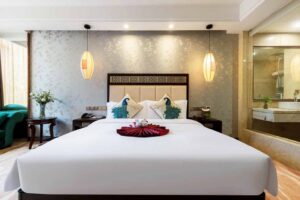

We stay in modern 4 star hotels or resorts most nights. We will also stay in local minority village guest houses whilst in Tibet to savour the culture and lifestyle of these very hospitable people.
Hotels in China are of exceptional standard and are comparable with hotels in more developed western countries. They are clean and tidy with modern facilities throughout.
Rooms are double/ twin with ensuite facilities. If you require a room for yourself there is a single supplement option available. Cost of this supplement is NZ $1500
Most rooms have coffee and tea making facilities.
An experienced guide
You will be accompanied by an experienced New Zealand guide (host). Your host will be with you for the duration of the tour. (T’s & C’s apply)
We will also have a fully accredited Chinese English speaking guide for the duration of the tour. Our guide is very well versed and qualified to comment on all that is Chinese.
Our driver is also accredited by the Chinese government.
Food
All meals are included in the cost of your tour in China –
Breakfast, Lunch and Dinner. Lunches are generally in restaurants with a great array of choices.
Dinner will be the main focus of our evenings – it is well known that Sichuan cuisine is some of the best in the world! It is less well known that, usually, each city has its own specialty. We will be trying each town’s best food as we make our way along the journey.
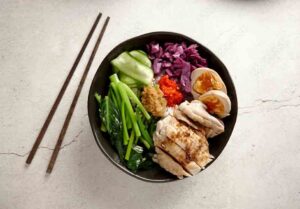


We cater for special diets of all description.
Bottled water is available for you at all times.
Sichuan cuisine is not just about heat. It is also known for its variety of flavours and cooking techniques, ranging from sweet and sour to smoky and savoury. There are said to be over 20 distinct flavour profiles in Sichuan cooking, and the cuisine uses a wide array of ingredients and methods such as stir-frying, steaming, braising, and smoking.
Transport
All transport is provided throughout the tour from Chengdu airport on arrival to Chengdu airport on departure.
On arrival at Chengdu airport you will be met by our Chinese Government accredited guide and driver.
You will be travelling in a well appointed small bus with very comfortable seating.
Visas
You may require a visa for China. Please talk to us at the time of booking and we can tell you the current situation with visas. Currently – 2025 – if you are a New Zealand citizen you do no need a visa to visit China if you are visiting for less than 30 day
Entry & Sustainable Development Fees
All entry fees to parks and attractions as listed in the itinerary
Additional Info
Travel Insurance
Travel Insurance is not included in the tour price but is compulsory.
We require all tour participants to have a comprehensive medical insurance in place.
Tipping
There is no tradition of tipping in China and it is not a requirement at restaurants or hotels that you tip for services provided. However if you feel you have been provided with excellent service and you would like to reward that, please feel free to offer a tip.
Tour cancellation
If a client wishes to cancel a Tour the following charges will be applied: (Unless stated otherwise)
- 91+ days prior to departure – no fee
- 90-60 days prior to departure – Deposit Non refundable
- 59-30 days prior to departure – 30% of total package cost applies. 29-0 days prior to departure – 100% of total package cost applies
- After tour commencement – no refund available.
These cancellation fees are not negotiable, therefore we strongly recommend that you purchase travel insurance.




